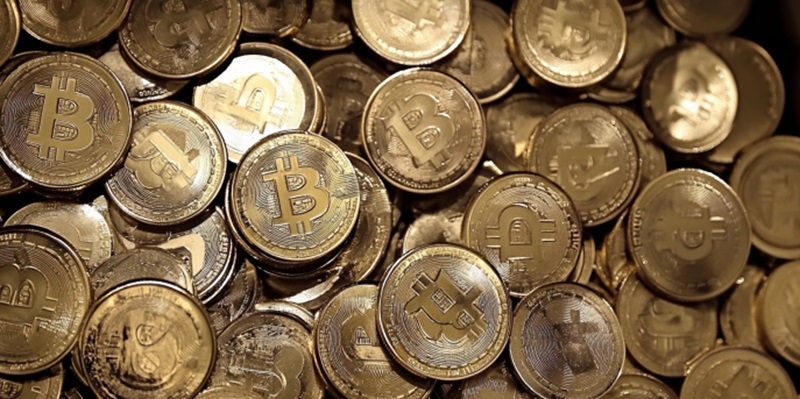The altcoin market is undergoing a significant transformation, no longer relying on Bitcoin as the primary driver for its success. This marks a departure from past market cycles where Bitcoin was central to the performance of alternative cryptocurrencies, commonly referred to as altcoins. Recent data and trends suggest that the crypto market may be on the brink of an altcoin season, a period when altcoins outperform Bitcoin. Unlike previous cycles where traders rotated capital from Bitcoin into altcoins, this potential shift is driven by different factors. Altcoin trading volumes now prioritize stablecoins over Bitcoin, indicating a fundamental change in market dynamics.
Historically, during an altcoin season, traders would rotate capital out of Bitcoin into altcoins, boosting their prices and trading volumes. However, this pattern is no longer dominant, as noted by Ki Young Ju, CEO of CryptoQuant, in a recent post. He explains that the current market behavior is driven by the trading of altcoins in stablecoin and fiat currency pairs rather than in Bitcoin pairs. This shift is evident even as the price of significant cryptocurrencies like Ethereum climbs. For example, Ethereum’s price movement has not resulted in significant trading in Bitcoin pairs for altcoins. In contrast, trading volumes of altcoins against stablecoins have surged, signaling a more profound change in how the market functions.
The Shift from Bitcoin to Stablecoins
This shift toward stablecoins can be attributed to their ability to provide essential liquidity and price stability, playing a pivotal role in the evolving market. Ki emphasizes that stablecoin liquidity is a better explanation for the current altcoin markets than the traditional asset rotation model. Stablecoins drive sustainable growth in the altcoin market, reducing reliance on Bitcoin as a benchmark or intermediary. Altcoins like XRP and Solana are approaching their all-time highs, and this growth in trading volumes against stablecoins signals real market growth rather than mere asset rotation. This evolution signifies a broader market transformation where altcoins are independently finding their footing in the crypto space.
Furthermore, stablecoins offer a level of security and predictability that was previously absent from the altcoin market. The ability to trade altcoins against stablecoins allows investors to mitigate risks associated with the volatility of Bitcoin. This creates a more stable and appealing trading environment, attracting both retail and institutional investors. The role of stablecoins in this new market dynamic underscores their importance in providing a foundation for sustained altcoin growth. As a result, altcoin trading volumes against stablecoins have experienced a substantial increase, further entrenching this new market structure.
The Role of Institutional Capital
In addition to stablecoin liquidity, institutional capital has also emerged as a crucial factor reshaping the market. Unlike past cycles dominated by retail investors, the current bull market sees robust capital inflows into Bitcoin spot exchange-traded funds (ETFs). This marks a deviation from the speculative, retail-driven momentum of the past and brings a layer of credibility and stability, benefiting the broader crypto ecosystem, including altcoins. Institutional investment brings a depth of market engagement that was previously lacking, signaling a maturation of the space.
Despite these positive indicators, the overall market capitalization of cryptocurrencies excluding Bitcoin remains well below its all-time high. This suggests that a significant influx of new capital is necessary for altcoins to reach new peaks. Ki notes that for altcoins to achieve a new all-time high market capitalization, substantial fresh capital inflows are required in crypto exchanges. This highlights the importance of institutional participation in driving the market forward. Institutional investors provide the necessary liquidity and market depth to sustain and grow the altcoin market, further reducing dependence on Bitcoin-centric metrics.
Indicators of an Impending Altcoin Season
A critical measurement providing insights into the market’s direction is the altcoin season index, tracked by Blockchain Center. This index identifies an altcoin season when 75% of the top 50 coins outperform Bitcoin over a 90-day period. Presently, the index reveals that 73% of the leading 50 altcoins have outperformed Bitcoin in the last 90 days. This steadily climbing figure hints that the threshold for declaring an official altcoin season is within reach, signaling a potential shift in market dynamics. The altcoin season index serves as a vital indicator, showing the relative performance of top altcoins against Bitcoin, giving investors a clear signal of market trends.
The overarching trend showcases a maturing market where stablecoin liquidity and institutional participation drive altcoin performance. This evolution underscores the reduced role of Bitcoin pairs in altcoin trading and highlights the importance of fresh capital inflows for the continued growth and new peaks in the altcoin market. The shift away from Bitcoin-centric trading toward stablecoins and institutional investments marks a significant evolution in the crypto market, presenting new opportunities and challenges for investors and traders alike.
The New Normal in the Altcoin Space
The altcoin market is experiencing a major transformation, no longer relying on Bitcoin as its main success driver. This represents a shift from past market cycles where Bitcoin played a central role in altcoin performance. Current data and trends hint at an emerging altcoin season, a period when altcoins outperform Bitcoin. Unlike earlier cycles, this shift is driven by new factors. Altcoin trading volumes now favor stablecoins over Bitcoin, highlighting a fundamental change in market dynamics.
Historically, altcoin seasons saw traders moving capital from Bitcoin to altcoins, increasing their prices and trading volumes. However, this pattern has changed, as noted by Ki Young Ju, CEO of CryptoQuant. He points out that today’s market behavior is influenced by trading altcoins in stablecoin and fiat currency pairs, not Bitcoin pairs. This shift is clear even as significant cryptocurrencies like Ethereum rise in price. For instance, Ethereum’s price increase hasn’t led to substantial trading in Bitcoin pairs for altcoins. Instead, altcoin trading volumes against stablecoins have surged, marking a significant change in market operations.

